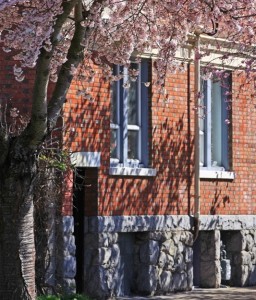Tips for Avoiding Damage from Trees on Your Church Property
August 30, 2012 - 3 minutes read The presence of trees can greatly enhance a property. They can provide a beautiful spot for people to sit under, shade the building and help improve its energy-efficiency, and sometimes even add to the property’s value.
The presence of trees can greatly enhance a property. They can provide a beautiful spot for people to sit under, shade the building and help improve its energy-efficiency, and sometimes even add to the property’s value.
However they can also increase the risk of property damage – especially if left to grow wild. Weak or dead branches can turn into dangerous missiles in a strong wind, and diseased trees can uproot or topple and crash into the roof or cause window breakage. Worse still, they could cause severe injuries to people on the property.
To avoid the risk of harm, damage and any resulting property or liability insurance claims, trees should be properly maintained at all times. This starts with conducting regular checks three or four times each year, and a having a professional inspection done at least annually.
Things to look out for in a tree inspection:
- Branches which overhang the roof.
- Tree cracks, decay, fungus and hollow cavities.
- Overly-dense foliage.
- Branches which are weak and brittle rather than flexible.
- Damaged or inadequate roots – tree roots should extend out all around it to provide stability.
- Old and diseased trees.
- Trees that are too close to buildings – they need to be at least their full-grown height away from structures.
Tips for tree maintenance include:
- Regular trimming and pruning – while you may want to do some of this yourself, major pruning and maintenance should always be managed by a tree-maintenance professional who has the required expertise and safety equipment.
- Regular watering and fertilising – to keep the soil healthy and help prevent compaction.
- Removal of old, dead or diseased trees – especially those that are a likely potential hazard.
- Overhanging branches – these should be cut away. Not only could they cause damage from continual scraping on the roof or from breaking away, they can also clog up gutters and cause drainage problems.
- Tall trees close to the building – consider removing or trimming those that are likely to cause damage if they topple in a strong wind.
In addition, when planting new trees always consider their full-grown height and their distance from building structures, walkways and car-parking areas.
When you consider the size and weight of larger trees they have the potential to cause enormous damage and / or injury. Keeping your property’s trees healthy should help you to avoid these problems and to keep your insurance claims in check in the process.
Click on the link to read more CCI posts on maintaining safe premises for churches.
Written by Tess Oliver
Tags: asset protection, maintenance, weather
Recent Comments